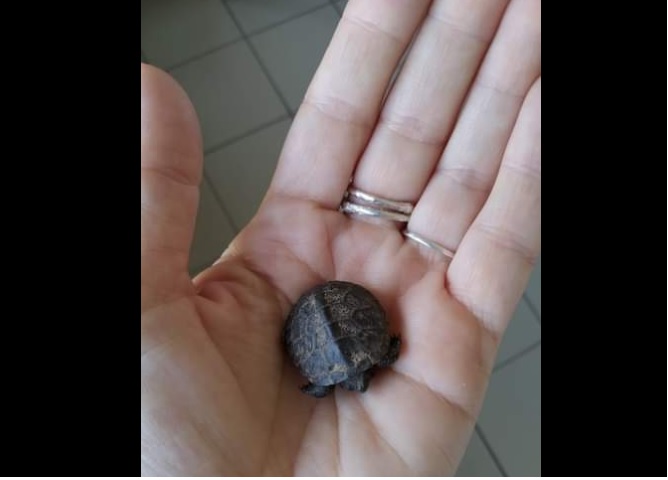A few days ago, when we were starting our spring work outside, we came across a small earthen– Duna Dráva National Park reported this.
Our country’s only native turtle species hibernate in the mud in the fall and wake up at the end of March or the beginning of April, depending on the weather.
Mating takes place in May, and the females lay their soft-shelled eggs in the sandy soil in June, which are then hatched by the heat of the sun. Baby turtles hatch at the beginning of September, however If the summer is very cold, they will not appear until the spring of the following year. This happened with this copy as well.
The Dráva Gate exhibition center is an egg-laying place where turtles are protected
The Dráva Kapu Presentation Center of the National Park is located next to a stream and there is also a sandy area in the yard, ideal for spawning. In previous years, baby turtles were also found around the building, so we can say that the exhibition center can be considered as a traditional egg-laying place. Since neither eggs nor hatching turtles are safe from foxes, badgers and wild boars, during the egg-laying period these egg-laying places are protected from predators by a special metal frame.
The bog turtle has a stocky body, a moderately curved carapace, and a blackish-brown color, dotted with yellow spots and spots.
The older the turtle, the more spots it has. In males, the ventral side is slightly more concave, so that it does not “wobble” as much on females during mating. Their tails are remarkably long, up to 8 cm.

They are often seen sunbathing on a log sticking out of the water or on stones; In case of danger, they quickly jump into the water. They also get their food here. They can catch aquatic insects, molluscs, small fish and frogs. Carrion is also not disdainful, and it is also referred to as a corpse cleaner for water. In the Middle Ages, turtle soup was a common dish on the table.
They still live in relatively large numbers in Hungary today, but they are threatened by several threats, and their number is decreasing.
As a result of sewage and construction, their habitats (lakes, backwaters) are constantly disappearing, and the destruction of spawning grounds and vehicle traffic reduces their population.
Protected, Nature Conservation Value HUF 50,000.
source: Andrea Schulcz, Zoltan Horvat Danube Drava National Park











































